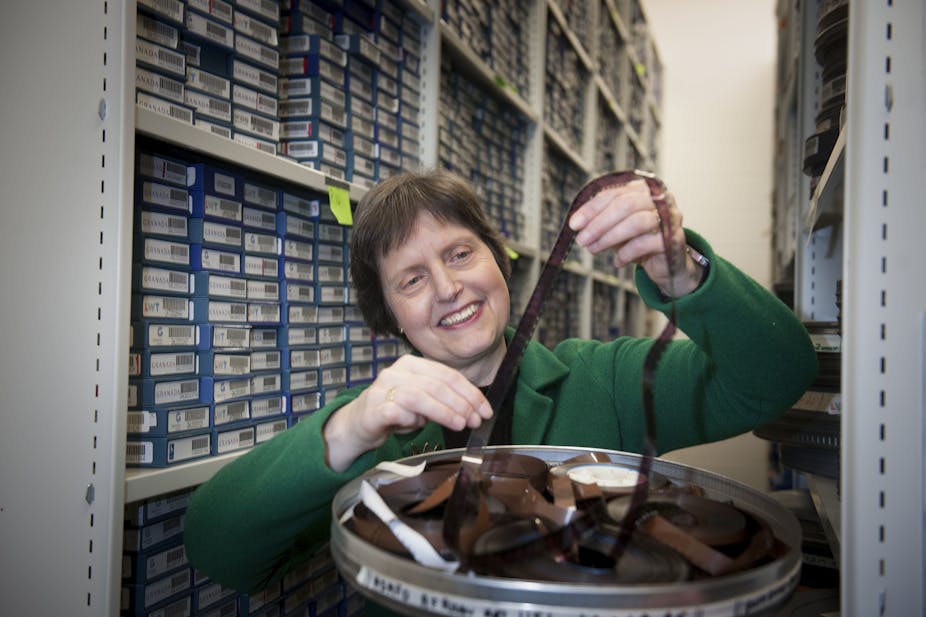For more than 35 years, The South Bank Show (SBS) has been at the forefront of British arts broadcasting. More than 750 editions have been produced on subjects as varied as Francis Bacon, The Darkness, Ian McEwan and Tracey Emin. The show aims to engage viewers with an exploration both of works and of creative personalities. It has been edited and fronted throughout by author and broadcaster Melvyn Bragg – who has, largely as a result, become a central figure in British cultural life.
From its launch, SBS aimed to combine both “high” and “popular” culture, with a focus on accessibility and on achieving a mass audience. First appearing on British screens on ITV in 1978, SBS signalled its accessibility in a number of ways. The title sequence by Pat Gavin was specifically commissioned with the brief to “make the arts look accessible”. There was an emphasis on mixing modern popular imagery (The Beatles) with the canon of “classic” art (Michelangelo). The music that accompanied the opening titles was taken from Andrew Lloyd Webber’s Variations, based on Paganini’s “24th Caprice” and composed in 1977 for his brother, the cellist Julian Lloyd Webber.
SBS immediately asserted itself as working within a democratising and inclusive framework, with early programmes on the comedian Ken Dodd (1978), and Paul McCartney (1978) establishing the hallmark SBS style. The show combined backstage documentary access with Bragg’s intimate, convivial interviewing. This was a distinctive contribution to a broader trend within arts programming at the time.
From the outset, SBS has also covered more traditional arts subjects, such as profiles of the dramatist Arthur Miller (1980), painter Francis Bacon (1985) and Sir Laurence Olivier (1982). The form has shown variations since its inception in 1978. Initially it was in “magazine format”, covering multiple topics each episode, evolving into a more varied stylistic approach, focusing on one topic. Important editions were directed by creative filmmakers such as David Hinton, Geoff Dunlop and Ken Russell – and the programme has also always employed elements of an observational documentary style, based on behind-the-scenes access.
When Bragg flagged his decision to retire in 2009 – prompted by budget cuts he said were “an offer I couldn’t acccept”, ITV announced the show would be discontinued after 30 years. But, after a backlash – including from Prince Charles who said it would be “alas the very end of one of the most important beacons of the arts in this country” – Bragg bought the rights and the programme was quickly taken up by Sky Arts. It continues to be produced to this day.
Untapped resource
The show has an incredibly rich history, both as a television programme and as a critical viewpoint on the changing world of artistic endeavour and those who engage with it. It would be fertile ground for academics – but as yet there hasn’t been much attention given to the series.
But this is set to change, as the University of Leeds has recently acquired the SBS film archive. Usually only 15 or 20 minutes were broadcast from the original interview tapes, after the initial editing process, which leaves almost 8,500 tapes and reels of film of unseen footage. These 700 hours of footage will provide a rich resource for scholars and are sure to give up some very interesting perspectives on the arts in the UK over the past four decades.
My own research focuses on how the history of SBS can illuminate the complex relationship between arts broadcasting, cultural value, and social change. The subjects covered by SBS since 1978 is a “Who’s Who” of recent cultural history. But, perhaps more interestingly, the archive also tells us a great deal about changing cultural tastes in Britain, with programmes on people now less well remembered but of significance within their time.
A dying breed?
It is hard to imagine a project with the ambition, scale and resources of SBS emerging in today’s television ecology. As noted, a new version of SBS now flourishes on Sky Arts, but it is clear that serious arts broadcasting is increasingly being displaced to niche digital channels, often funded by subscription.
Such a situation is only likely to intensify the trends identified in the Warwick Commission on Cultural Value, which shows that cultural participation is becoming ever more socially skewed (higher social groups account for 87% of visits to free museums, for example) and that those from low income backgrounds are far less likely to pursue creative occupations than those from privileged backgrounds.
In an intensifying climate of inequality, cultural participation is becoming the preserve of those with high levels of economic and cultural capital, something which threatens the future vitality of our creative industries.
This type of television may be a dying breed on mainstream, terrestrial television, which makes it all the more important to study. With the kind of mass arts engagement that SBS offered on the way out, we need to think about new ways to address the social skew in the arts.

